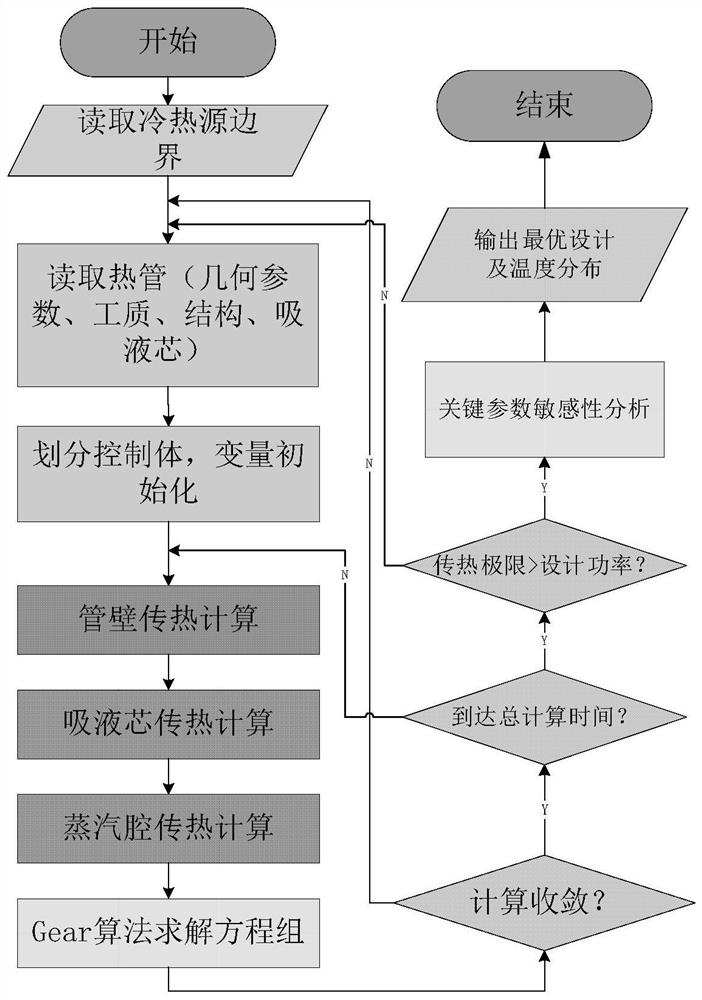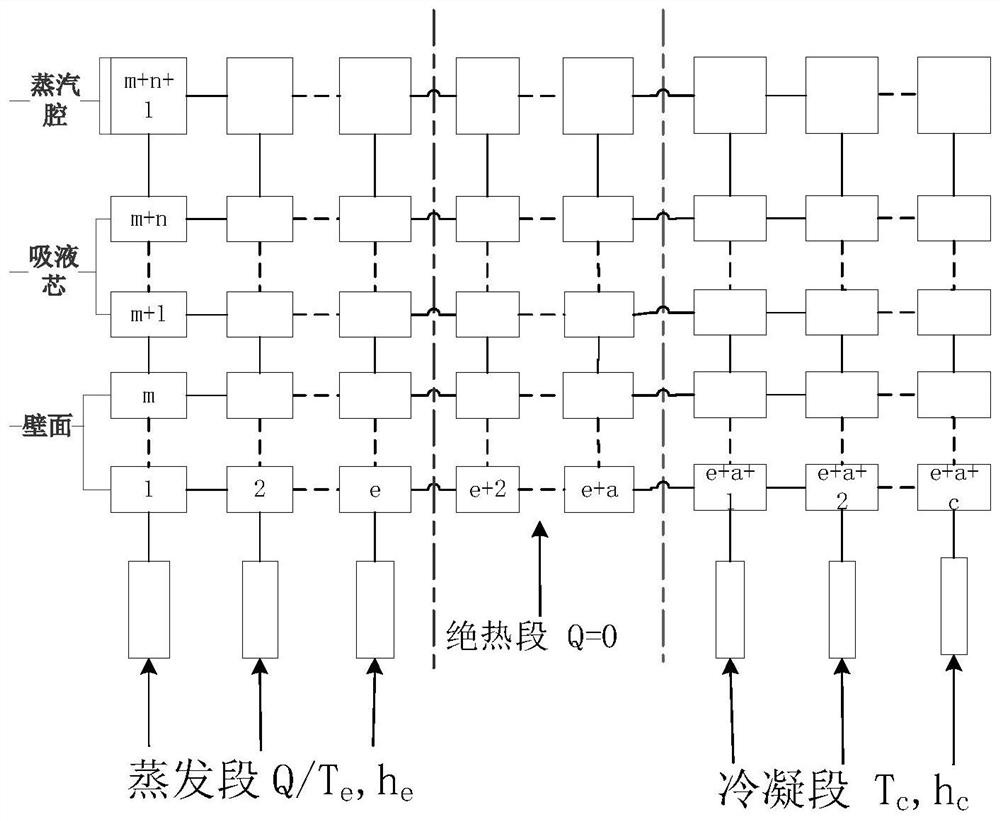Heat transfer characteristic analysis method for heat pipe in nuclear power system
An analysis method and technology of heat transfer characteristics, applied in the field of heat transfer characteristics analysis of heat pipes in offshore nuclear power systems, can solve problems such as leakage of radioactive coolant, insufficient passiveness, and danger
- Summary
- Abstract
- Description
- Claims
- Application Information
AI Technical Summary
Problems solved by technology
Method used
Image
Examples
Embodiment Construction
[0130] The present invention will be further described in detail below with reference to the accompanying drawings and specific embodiments.
[0131] like figure 1 Shown, the heat transfer characteristic analysis method of heat pipe in a kind of nuclear power system of the present invention, the steps are as follows:
[0132] Step 1: Input the heat source and heat sink conditions of the heat pipe, the heat source is the electric heating wire heating with a given heat flux density or the flow heating with a given surface heat transfer coefficient and hot fluid temperature; the heat sink is a given surface heat transfer coefficient and cold fluid temperature Sweep cooling or casing cooling; input the working fluid, structure and geometric parameters of the heat pipe, and set the total calculation time;
[0133] Step 2: If figure 2 As shown, the heat pipe wall and liquid-absorbing core are divided into m layers and n layers along the thickness direction, and the steam chamber...
PUM
 Login to View More
Login to View More Abstract
Description
Claims
Application Information
 Login to View More
Login to View More - R&D
- Intellectual Property
- Life Sciences
- Materials
- Tech Scout
- Unparalleled Data Quality
- Higher Quality Content
- 60% Fewer Hallucinations
Browse by: Latest US Patents, China's latest patents, Technical Efficacy Thesaurus, Application Domain, Technology Topic, Popular Technical Reports.
© 2025 PatSnap. All rights reserved.Legal|Privacy policy|Modern Slavery Act Transparency Statement|Sitemap|About US| Contact US: help@patsnap.com



